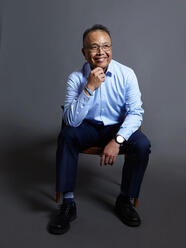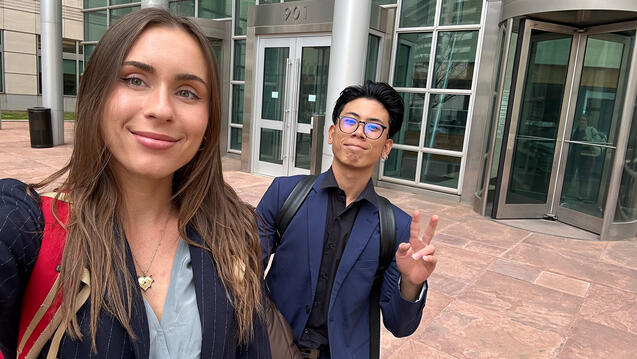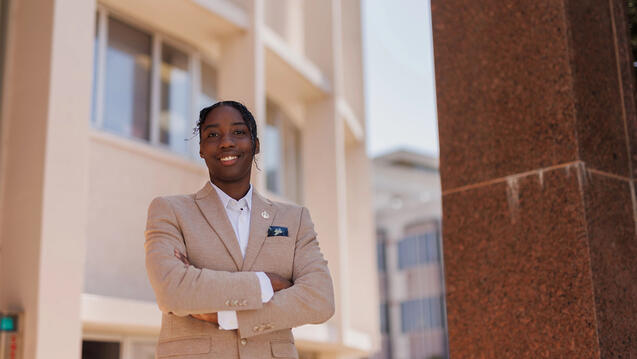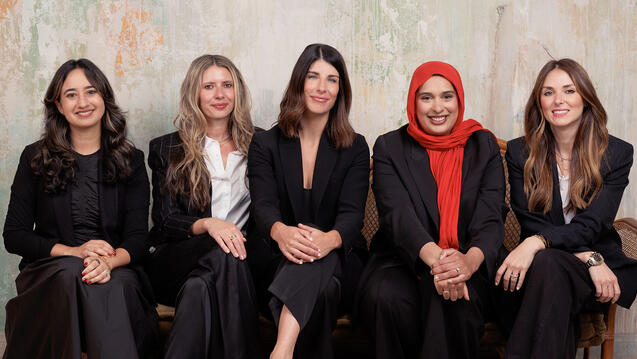
From Refugee to Rainmaker
Ask Chinh Pham ’93 to describe himself and he’ll say, “I practice law, and I help clients protect their innovations as well as monetize their innovations.”

But what you won’t hear is this: He fled Vietnam when he was 10 years old. Straight out of college he had a biotech career in Silicon Valley. He made a leap to USF Law. He lost a bet and moved to Boston. He ran his first Boston Marathon as a bandit. “That’s a long story!” he laughs. “Are you sure you want to hear it?”
Flight From Saigon
On April 28, 1975, 10-year-old Chinh Pham stood on the roof of Hoan My Hospital in Saigon and watched a rocket strike a South Vietnamese fighter jet in midair. “I tried to see if the pilot ejected, but I couldn’t see through all the fire and smoke,” he says. The next day, as the North Vietnamese Army approached Saigon and the South Vietnamese government prepared to surrender, Pham and his family—father, mother, one sister, and two brothers—gathered only what they could carry and piled into a boat along with other families trying to escape. The boat took them down the Saigon River toward the South China Sea. After two days on the sea in search of a ship that would take them aboard, Pham and his family found the USS Duluth. They were brought on board and directed to the ship’s highest deck. From there they watched crewmembers push helicopters overboard to make room for more people. The Duluth, designed to carry 800 troops, took aboard nearly 2,000 South Vietnamese refugees.
“For my father in particular, it was either leave Vietnam or get thrown into a reeducation camp,” Pham says. All members of the South Vietnamese military and any civilians who worked with Americans or had a higher education were suspect in the eyes of the North Vietnamese, he explains. “My dad was educated in Germany and the U.S., so most likely an enemy of the communist state.” As Saigon fell, the USS Duluth carried Pham and his family to the Philippines. From there they flew to Guam in a military cargo plane, strapped to the floor because the plane had no seats. Then they were flown in a passenger plane to a refugee camp in Fort Smith, Arkansas, and arrived on May 12, 1975.
“We ended up in Iowa that August after leaving the refugee camp because my dad found a job and a sponsor there,” Pham says. For the next several years, the family moved to Detroit, then Houston, and then San Jose to follow job opportunities. Pham attended UC Berkeley and studied genetics. Then he worked at several biotechnology startups in Silicon Valley. “For whatever reason, the lawyers who represented these companies would often come up to me and say, ‘You should go to law school,’” he says.
Leap To Law
Pham studied law, in part, because it offered a better return on investment than business school. “There’s a whole lot of MBAs out there but not quite as many IP lawyers, so I figured I could find work as an IP lawyer,” he says. At the time, only Santa Clara and USF had intellectual property programs in the Bay Area, “and I knew and admired Professor Thomas McCarthy at USF,” so he chose USF for law school.
“USF taught me grit,” Pham says. Early in his second year, he contacted five law firms in San Francisco. He told them that he wanted to gain experience in IP and asked if they’d let him work for free. “They all said yes,” he says. He chose a boutique firm called Fliesler Dubb Meyer and Lovejoy and started working there 20 to 25 hours per week. Then he got another idea.
“I mentioned to one of the assistant deans that I’m working at a law firm for no pay. ‘Can I get course credit?’ She told me, ‘We don’t have an IP externship program. Set it up!’ So, I did.” For the next 18 months, Pham worked part-time at Fliesler Dubb Meyer and Lovejoy. Then, in his third year, a few weeks before graduation in 1993, they offered him a full-time position that he couldn’t accept.
His fiancée, Laureen McVay, was in business school in Boston at that time, and she too was set to graduate. “Laureen and I had a playful bet: Whoever received a job offer first gets to decide where we’d live after graduation,” Pham says. “She got an offer from a company in Boston a few weeks before I got the offer from the firm in San Francisco, so I lost the bet and moved to Boston! We’ve been married going on 32 years. Guess things worked out ok for us.”
Boston And Beyond
Today, Pham is a principal shareholder at Greenberg Traurig LLP in Boston. In addition to co-leading the firm’s venture capital and emerging technology practice, he has particular expertise in what he calls “the strategic creation, implementation, and protection of intellectual property rights” for technology clients.
“Imagine back in the day before any vehicles were invented,” he says. “You tell a patent attorney that you have this great idea. It’s this thing that you can sit on. It’s got a wheel you can pedal, and you get yourself around. That patent attorney likely will say, you’ve invented a unicycle. If you secure a patent for a unicycle, then pretty much all you get is the unicycle and bragging rights. But if you approach me, I’ll get you a patent with you as the creator of a vehicle that has a wheel. Then, when someone else invents a bicycle or a tricycle or a carriage or a car that runs on two wheels or more, all of those inventors will need to get a license from you because your patent covers a vehicle having a wheel—that is, at least one wheel. So, with a strategically written patent, you can actually make money from licensing fees.”
Pham credits Hugh Dubb, a partner at Fliesler Dubb Meyer and Lovejoy, with teaching him about intellectual property and the business of law. “I noticed the way he practiced was really more about business than about law,” Pham says. “He told me that anyone can draft a patent application. That’s not hard to do. But what’s the point of a patent? A patent is a negative right. A patent is defensive. A patent only prevents; it doesn’t give the holder the right to do something. I want to enable. To me, the highest purpose of a patent is to help a client achieve a business objective, and helping clients achieve their business goals is what brings me to work.”
Pham is also active in the Boston community and has advocated for others throughout his career. He was elected president of the Boston Bar Association for 2022–2023, the first Asian-American attorney to hold the position. He has also served in other leadership roles, including as president of the National Conference of Vietnamese American Attorneys, chair of the Boston Museum of Science’s Board of Museum Advisers, and as an adviser to academic institutions including Harvard iLab, The Garage at Northwestern University, IDEA at Northeastern University, and Columbia University. Pham recently joined the USF School of Law Board of Counselors as a way to give back to the school that helped launch his legal career. In everything he does, he says, he pushes to build more diverse and inclusive communities.
Mentorship And Marathons
When he isn’t practicing IP law or advising or volunteering, Pham mentors USF Law students. And when he isn’t mentoring USF Law students, he runs.
“I wish I’d had a mentor during law school—someone to tell me how law and business and technology overlap in the real world,” he says. “One of the things I like about USF is that it’s a hands-on education. It’s not an ivory tower.”
Each year Pham mentors one or two USF Law students who connect with him through the Alumni Mentor Program. One such student, Jacqueline Nemanich ’25, asked Pham if she should spend the summer after her second year working for a federal magistrate judge or interning at a midsize civil litigation firm in San Francisco. “He said to me, ‘Why not do both?’" Nemanich says. “‘Ask them if you can split your summer!’” She ended up working eight weeks for the judge and then 15 weeks for the law firm.
In the fall semester of her third year, Nemanich received two job offers, one from the midsize law firm and the other from a big law firm. With Pham’s counsel, she chose the big law firm. “I’ll be working in commercial litigation, primarily with tech companies. It’s intellectual property-adjacent,” she says. Nemanich says that she’s grateful to Pham. “I was surprised at how available he is. He’s a busy IP lawyer and he’s all the way across the country and he makes me a priority.”
Pham also mentors law students and lawyers in the Boston area. “Sometimes a lawyer will say to me, ‘I’m disappointed that I didn’t make partner, and I didn’t make partner because I wasn’t given the opportunity to attend pitches or to work on big cases.’ I ask them, ‘Why do you think you should be given those opportunities?’ Why not make your own opportunity? My motto is that your success should not be dependent solely on anyone else’s action, and your failure should never be the result of someone else’s inaction.”
When Pham ran his first Boston Marathon in 1999, he didn’t register. “I just showed up,” he says. “The race officials strung a tug-of-war rope across the back of the starting line and said to those who did not register, ‘Bandits, stand behind this rope!’ They gave us a bib to pin to our shirts. It actually said ‘Bandit’ on it. So we all stood behind the rope and waited for the official entrants to start. After they started, the officials dropped the rope and it was our turn to run.”
Why did Pham run as a bandit? “It was my first marathon. I just wanted to try it,” he says. “If they stop me, they stop me. I’d rather try and fail. I still have that ‘Bandit’ bib.”
Since then, Pham has run all six of the world’s major marathons—as an official entrant. “Boston, New York, Chicago, Berlin, Tokyo, London. At the end of August, I also completed the newest and seventh major marathon, in Sydney.”
Would he ever run a marathon in Ho Chi Minh City, formerly known as Saigon? “I don’t know. I’ve only been back once and that was 20 years ago. Perhaps it’s time to conquer another challenge.”


